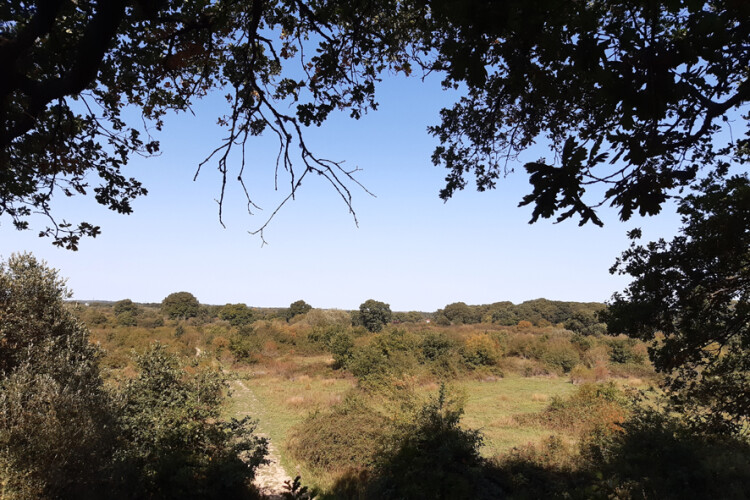Although published at the end of January this year, the government’s new Environment Bill, with its far-reaching proposals to tackle plastic waste, poor air quality and the depletion of habitats and biodiversity, has barely registered on the construction industry’s agenda.
Pushed into the background by the Covid-19 pandemic, the Bill – which is due to pass into law in January 2021 – will nevertheless introduce significant new obligations on developers of building and infrastructure projects.
Developers will need to deliver a 10% ‘biodiversity net gain’ on their sites, a far more onerous requirement than the current situation, where developers only have to ‘mitigate’ the impact of their projects.
In fact, according to ecologist Stephanie Wray, from environmental consultant RSK Wilding, a 10% biodiversity net gain is almost impossible to deliver on site. Typically, she says, a new-build development can take up 80% of the surface of the land. “If you’re building on 80%, you simply can’t make the site 10% richer in habitats and species. Developers will therefore need to pay to offset their impact on biodiversity,” she says.
This article was first published in the Oct/Nov 2020 issue of The Construction Index magazine. Sign up online.
Wray admits that the whole concept of ‘offsetting’ – most commonly encountered in the context of carbon emissions – is fraught with potential for misinterpretation. She points out that when an organisation claims to have offset its carbon emissions – for example by planting trees, whether locally or on the other side of the planet – it isn’t necessarily delivering a net benefit to the environment.

Paying someone to plant new trees in compensation for those you cut down to make way for a new development might reduce your carbon footprint but it’s unlikely to deliver an environmental net gain.
“If you just focus on offsetting your carbon emissions and planting trees well, yes, you might actually get the equation to balance and your carbon to be settled but are you really sustainable?” she asks.
“The trees you cut down might not just have been sequestering carbon; they might have a role in managing the water catchment; they might be home to a range of species including pollinators that are important for local crops. There’s a whole range of benefits because the environment isn’t doing just that one thing for us – sequestering carbon – it’s got a whole range of goods and services that it offers us.
“The key question is: ‘does it cancel out the environmental harm?’ and that’s a very different question to ‘does it balance my carbon budget?’ which is what a lot of organisations are trying to do.”
Answering that question requires more than simply balancing an equation. “For too long I think we’ve focused our attention solely on carbon and believed that the unit of sustainability was the carbon molecule – and it’s really not. It’s much broader than that.”
Wray borrows a quote from Hitchhiker’s Guide to the Galaxy author Douglas Adams: “Ecology,” she says “is about ‘triangulating the vectors of interconnectedness of all things’. The reality of ecosystems is so complicated and you have to be able to deal with that complexity.”
Biodiversity is “the tricky bit”, admits Wray. “It’s the bit with all the complexities of interrelationships between animals and their environment,” and it will be something the construction industry will have to get to grips with when the Environment Act comes into force next year.
“This is looking at biodiversity specifically and making sure that where you’ve lost biodiversity your development puts at least the same amount back,” she says. The good news is that if you get that bit right, “the rest of our dimensions of stability are quite likely to fall into place alongside them.” The same cannot be said if you simply balance your carbon emissions, adds Wray.
The solution being put forward by Wray and her firm RSK is ‘rewilding’ – not a new idea, but one that is not well understood and has yet to become mainstream. Wray heads up a newly-formed specialist division of the company – RSK Wilding – which has been launched with the express intention of helping businesses, large and small, “offset their carbon emissions and ecological impacts while helping to reverse decades of environmental degradation, biodiversity loss and climate impacts”.
If the average UK resident ever thinks about ‘rewilding’ it’s likely to be in terms of long-lost species reintroduced to the British countryside and recolonising remote forests and moorlands. Advocates of rewilding have indeed proposed the reintroduction of wild boar, wolves, lynx and even moose – much to the alarm of farmers and other rural dwellers. But while beavers and wild boar have indeed re-established themselves recently in parts of the UK, this really isn’t what RSK Wilding is advocating.
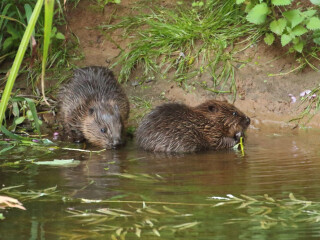
“Rewilding isn’t just about bringing back wolves and beavers,” says Wray. “What we’re really talking about is not imposing a particular direction on the development but letting natural ecological processes take over and for the community of plant, insect and bird life to develop naturally,” she says.
Wray is driven by the idea of a ‘rewilding industry’ where the value of a piece of land is measured more broadly than just in terms of its development potential or even agricultural value. No such industry currently exists, but Wray is confident that it will emerge.
“Food production isn’t the only public benefit that we need from the land that we have here in Britain,” she says. “Some of the other benefits are clean air, clean water, not having our houses flooded every time it rains in the winter. Land can be managed for those benefits as well.”
Perhaps the best-known example of rewilding in recent years is the Knepp Estate, a 3,500-acre farm in West Sussex which was, until about 20 years ago, a conventional arable and dairy farm. Then its owners, Charlie Burrell and Isabella Tree, took the commercial decision to let the estate literally run wild.
Now, as Tree describes in her book Wilding, published two years ago, the estate is a haven for wildlife, spontaneously re-colonised by rare and endangered species of insect, bird and mammal, as well as numerous plants.
The estate still farms Highland cattle and Tamworth pigs and is home to herds of Exmoor ponies and both red and fallow deer. And it is still commercially viable – albeit thanks more to its lucrative ‘glamping’ and eco-tourism business than to its farming activities.
Wray considers the Knepp Estate to be a good example of how rewilding can make good business sense. And she thinks that given the Environment Bill’s forthcoming requirement to deliver a 10% net biodiversity gain on construction projects, it has plenty to teach other businesses.
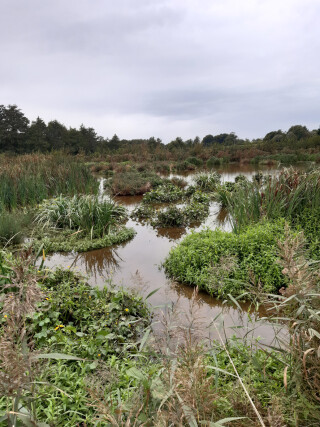
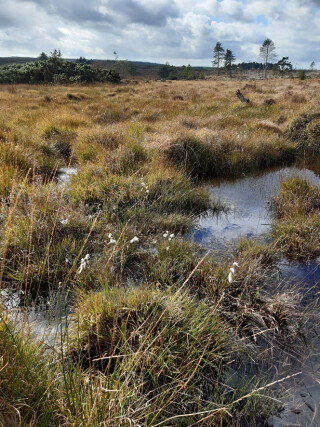
RSK Wilding says its aim is to help “clients, landowners and other stakeholders … restore some of the UK’s landscape to the natural, biodiverse and wild place it used to be, connecting existing protected areas. By doing this, we will be playing our part in leaving a better legacy for future generations”.
According to Wray there’s a lot of land that has little value for development but which could be harnessed to help businesses deliver their biodiversity obligations.
“Brownfield sites can do really well,” she says. “We’ve worked on a few projects where we’ve gone back some years after a brownfield site’s been restored and done biodiversity calculations retrospectively and seen real improvements and genuine net gains in biodiversity.”

Most local authorities have a number of vacant or derelict sites within their area and Wray believes it would be well worth these authorities carrying out an audit of these various plots of land.
“Then you could say ‘these sites are the ones that are good for development and these are the ones where we could maybe develop some renewable energy technologies. But this one would be best kept for its natural capital value: let’s leave that for natural flood space – you know, so we flood somewhere that’s not valuable for people’,” says Wray.
But as Wray has already pointed out, not all landowners and certainly not all sites can provide enough space on which to deliver the 10% biodiversity gain that will be expected of them.
When the Environment Act comes in next year and developers are required to deliver biodiversity net gain on their new developments, having existing pieces of land that they can manage for biodiversity to help them deliver their own offsets will prove very helpful, says Wray.
“And of course you can stack those benefits so you can use that land for sequestering carbon, delivering your biodiversity net gain and for your social or community outreach,” declares Wray. “In fact, if I were a house-builder I might be looking now at adding into my landbank not just land that I think is viable to build houses on, but also land that I think is marginal and I might want to do some of these other things on and offset my impacts.”
What you can’t do under the forthcoming legislation is simply pay someone to plant a few trees in a far-off country and pretend that you’re offsetting your biodiversity impacts, cautions Wray: your mitigation measures have to be “as local as possible – in the same country; ideally the same county,” she says.
“The idea is that first of all you try to reduce the amount of net [biodiversity] loss. When you’ve done that as far as you can, then you try to improve the development itself and get more biodiversity into that for the benefit of the environment and the people who are going to live or work there. Only then do you start to do things a bit further afield,” Wray explains.
However, she says that on a small construction project that requires only a little net gain, there’s no point “doing a tiny little bit in a field with no context to anything else”. That’s where a consultant like RSK Wilding can help out by linking clients up to larger strategic initiatives.
As Wray says, balancing your carbon emissions is a fairly straightforward process and is easily calculated; measuring biodiversity is “the tricky bit” – but it can be done.
Some local authorities, such as Warwickshire, and large landowners, including Network Rail, have already developed their own biodiversity metrics but, says Wray, “there is one metric, a measure that we’ve all coalesced on: Defra has actually developed a way of measuring biodiversity.
“It’s not perfect – biodiversity is quite complicated – but what it does is use the areas of different habitat type as a proxy for biodiversity,” she explains. “So we look at how much woodland is there, how much grassland, ponds, rivers and so on, and for each of those habitats we measure how big it is and then [an ecologist] looks at the ‘distinctiveness’ – how rare or special – each one is.”
This article was first published in the Oct/Nov 2020 issue of The Construction Index magazine. Sign up online.
Scores are then attributed to each habitat – an ancient woodland would get you more points that a piece of well-mown grassland, for example. “So we look at the condition each habitat is in, calculate the area, then add up all the habitat types on your site and come up with a number of what we call ‘biodiversity units’,” says Wray.
“Then we look at your plans for that site and see what’s going to be lost under tarmac or whatever and what habitat you’re proposing to create in your open public space and we look at what the value of those habitats will be. We do exactly the same sort of calculation. Then we take one away from the other and see if you’ve got a net loss, a gain or if it’s neutral.
“If you’ve got a net loss, that’s when we start looking at an off-site offsetting area to make up the shortfall and, with the new legislation, make that 10% net gain,” explains Wray.
It’s probably as well that there are consultants like RSK Wilding stepping forward to offer their services, because the construction industry’s obligation to protect the natural environment is only going to become more onerous. As recently as September this year, prime minister Boris Johnson stood up at a virtual United Nations event to join other world leaders in promising to reverse the loss of natural habitats.
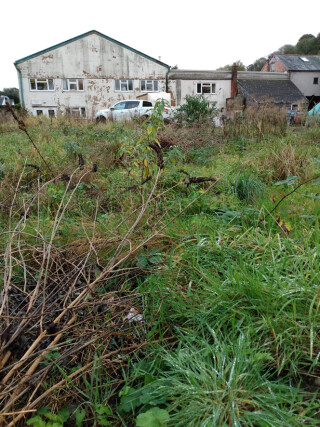
Signing the so-called Leaders’ Pledge for Nature, Johnson promised to increase the amount of protected countryside in the UK by 30% by 2030. “We must turn words into action…and agree ambitious goals and binding targets,” he declared.
Johnson’s goal is to protect an extra 400,000 hectares of English countryside for the natural environment. “That’s an astonishing thing if we can actually deliver it,” says Wray. But, as she points out, Johnson is talking mostly in terms of national parks, which currently cover around 26% of the land in England.
“National parks and AONBs [areas of outstanding natural beauty] aren’t really protected for biodiversity – they’re protected for landscape. But if we were adding even more – all those little sites; these rewilding areas, nature improvement areas and strategic habitat schemes – well, they’re all going to add up and maybe we can actually turn the tide on biodiversity extinction,” she says.
It might seem that there’s little that contractors could do, beyond simply toeing the line, to actively get involved with improving biodiversity and delivering the 10% net gain on their projects. But Wray says that she is in regular contact with a “fair number” of contractors who are taking a proactive stance.
“I’d say the major contractors are quite switched on. Balfour Beatty is very strong on biodiversity and they’ve been quite involved in the development of the biodiversity net gain and environmental net gain metrics,” she says. “So, yes, it is catching on and people are aware of it throughout the industry.”
For smaller contractors and developers that lack the resources of our biggest contractor, the whole business is likely to be more daunting. Wray suggests that small house-builders seek advice from an ecologist before they option a piece of land for development. “Go and talk to an ecological consultant or perhaps the county ecologist at the local planning office, if they’re lucky enough to have one. If you’re a small house-builder putting six units in place and discover that you have significant biodiversity issues on that site, that could make the site uneconomic,” she says.

But even if you discover your site is home to a protected species – the much-feared great crested newt is the archetypal culprit – all is not necessarily lost, says Wray. “A lot of local authorities now have what’s called district licensing schemes. For example, if you’ve got a regular site with six newts in a puddle, the law exists in a lot of authorities now where you can just pay into a scheme that does the offsetting for you – building ponds and moving newts into them – so you can get on and build houses, which is what you’re good at.”
So the increasing need for biodiversity doesn’t have to become a problem for the construction sector. “I think, once we get used to it and contractors are familiar with it, they’re going to get the idea of how to get the most biodiversity bang for their buck,” says Wray.
• The full interview with Stephanie Wray can be heard on the 30th September 2020 edition of Re:Construction, The Construction Index podcast. www.theconstructionindex.co.uk/podcast
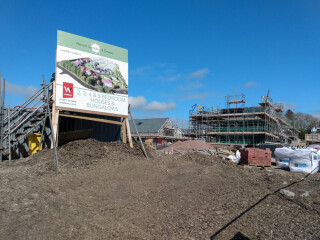
This article was first published in the Oct/Nov 2020 issue of The Construction Index magazine. Sign up online.
Got a story? Email news@theconstructionindex.co.uk

